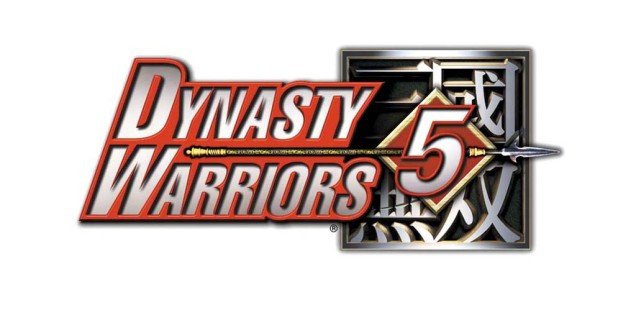
Dynasty Warriors 5
Spousal Unit and I originally got this game because we liked Dynasty Warriors. Rather, I liked messing around on easy mode with the fat guy or the chakram girl or the claw guy who looked like Vega. When I started playing Dynasty Warriors 5, the roster was a proverbial list of question marks. I’d forget the difference between Huang Zhong and Xu Huang and never remember if it was good or bad when the latter kept showing up as reinforcements.
Dynasty Warriors 5 turned me from a casual dabbler into a proper fan of the series and enthusiast for Three Kingdoms history and lore. The love remains strong a decade after its release.
Gameplay
Dynasty Warriors 5 has similar appeal to its predecessors – addictive beat ’em up action with the feel of participating in large-scale warfare spiced up with video game conveniences, but grounded in legend and history. Travel around a battlefield destroying officers and soldier squads by the boatload, prioritizing based on where you are most needed and how fast you can get there. Trigger fire and flood attacks and other such useful events, or prevent the same from the other side. Help your allies raise their morale so they will hold their own as you run off elsewhere. Return to a tough stage with better stats and equipment – thanks to a constant upgrade treadmill of experience points and item drops – to mop the floor in style.
Or, as some would say, more of the same all over again – but not quite. Dynasty Warriors 5 builds on its prequels with the most polished incarnation of their shared engine. There’s more freedom and fluidity in attacking, a satisfying pace of offense – including a turbocharged rage mode also used by enemy officers. Peon hordes are satisfying as well, maintaining their squad formations and attack patterns but numerous enough for you to efficiently kill en masse when built up. Bases dispense power-ups, shoot projectiles, and roadblock officer movement – another step in battlefield immersion.
Characterization
Previously, Dynasty Warriors were avatars distinguished by costume design, move set, and basic attitude, perhaps with an amusing quirk or a spot of motivation beyond the typical devotion to a kingdom or family member or one-word cause. A fair amount of the Dynasty Warriors 5 cast remains defined in those terms.
Even so, everyone gets an upgrade in screen presence. Each character’s multi-stage story features point of view narration from both the player and the commander. Speaking realistically at length makes characters seem human, even if they don’t notably distinguish themselves from others of similar archetypal cloth. Story battles include unique cut scenes – some conditional upon success or failure of events. Though ranging from superfluous to substantial, these all contribute to the balanced sense of something-for-everyone screen time. This character-specific material had me playing through all the stories, even those Spousal Unit had already finished.
A fortunate few are drawn with unprecedented quality of personal motive. Lu Meng grows from an impetuous fighter to a respected scholar and leader of the next generation of strategists. Cao Ren hates the necessary evil of war and fights with his own sense of do least harm ethics – decrying bloodlust and long-term collateral damage, personally protecting his men. Others have subtleties of presence and interaction. Xiahou Yuan loves to rudely speak first and not necessarily think later, but comes off as amicable with his casual self-deprecation, insistence on staying positive, and dislike of beating up on the weak.
Many characters get some form of happy ending rather than their historical or legendary defeat. The stories also show viewpoints from outside the Three Kingdoms, with amusing consequences like the tenuous fulfillment of Dong Zhuo’s lust for wine, women, and power. For those within the Three Kingdoms, you end up playing many of the same battles repeatedly – though Dynasty Warriors 5 tries to change things up with different starting points on the field and those aforementioned unique cut scenes. The individual stories also lack an overarching sense of context, which requires foreknowledge of Three Kingdoms lore or an extended game of connect the dots. Said context took me a while to get a good grip on, but the in-game timeline did help.
What Has Since Been Lost
Recent Dynasty Warriors games bring changes largely seen as improvements. They cohesively tell the story of each kingdom and allow more freedom in creating combos. Yet they fail at effective use of an increasingly bloated cast. Characterization improves for a select few, stagnates and regresses for others. Aside from move set experimentation, there is little impetus to play as everyone. Battlefield atmosphere lacks as well. Peons gather in homogeneous masses rather than as ranked soldiers in squads with group attack patterns and full combos from their leaders. Players are led by the nose between blinking green objectives on fields that too often resemble corridors. Gone is the incentive to craft an optimal strategy based on an underlying clockwork of real-time simulation.
Dynasty Warriors 5 has PS2 era graphics, fog of war covering up short draw distance, and generic placeholder models for my favorite newcomers to recent games. It lacks the sprawling battlefields of 3, the heavy traditional Chinese musical influence of 4. Yet it remains my high water mark of balancing quantity and quality. Satisfying death counts from organized and coordinated troops. A large roster with effort toward finding everyone’s potential for character development, from details of attitude to meaningful internal conflict. A pinnacle of its time, and precedent that current generation Dynasty Warriors would do damn well to learn from and adapt.
My ambition cannot be stopped!